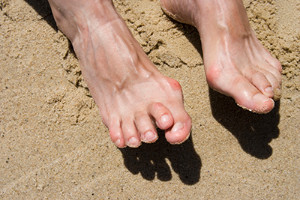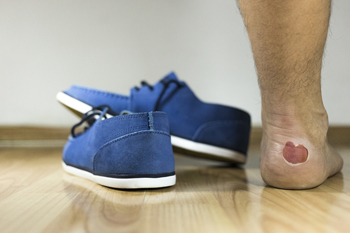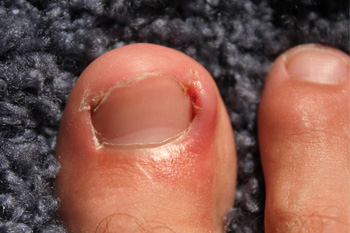 The medical condition that is known as hammertoe can occur as a result of wearing shoes that do not have adequate room for the toes to move freely in. It affects the second and third toes and causes them to bend at the middle joints, which often makes them resemble hammers. Patients may develop calluses on top of the affected toes, and this is the result of friction as the toes rub against the shoes. Effective treatment methods for mild cases can consist of wearing shoes that fit properly, and it may help to perform specific stretches. In severe cases, surgery may be necessary to permanently straighten the toes. If you are afflicted with hammertoe, it is advised that you consult with a podiatrist as quickly as possible who can help you with proper treatment management.
The medical condition that is known as hammertoe can occur as a result of wearing shoes that do not have adequate room for the toes to move freely in. It affects the second and third toes and causes them to bend at the middle joints, which often makes them resemble hammers. Patients may develop calluses on top of the affected toes, and this is the result of friction as the toes rub against the shoes. Effective treatment methods for mild cases can consist of wearing shoes that fit properly, and it may help to perform specific stretches. In severe cases, surgery may be necessary to permanently straighten the toes. If you are afflicted with hammertoe, it is advised that you consult with a podiatrist as quickly as possible who can help you with proper treatment management.
Hammertoe
Hammertoes can be a painful condition to live with. For more information, contact one of our podiatrists from Foot Health Center of Merrimack Valley. Our doctors will answer any of your foot- and ankle-related questions.
Hammertoe is a foot deformity that affects the joints of the second, third, fourth, or fifth toes of your feet. It is a painful foot condition in which these toes curl and arch up, which can often lead to pain when wearing footwear.
Symptoms
- Pain in the affected toes
- Development of corns or calluses due to friction
- Inflammation
- Redness
- Contracture of the toes
Causes
Genetics – People who are genetically predisposed to hammertoe are often more susceptible
Arthritis – Because arthritis affects the joints in your toes, further deformities stemming from arthritis can occur
Trauma – Direct trauma to the toes could potentially lead to hammertoe
Ill-fitting shoes – Undue pressure on the front of the toes from ill-fitting shoes can potentially lead to the development of hammertoe
Treatment
Orthotics – Custom made inserts can be used to help relieve pressure placed on the toes and therefore relieve some of the pain associated with it
Medications – Oral medications such as anti-inflammatories or NSAIDs could be used to treat the pain and inflammation hammertoes causes. Injections of corticosteroids are also sometimes used
Surgery – In more severe cases where the hammertoes have become more rigid, foot surgery is a potential option
If you have any questions please contact one of our offices located in North Andover, and Tewksbury, MA . We offer the newest diagnostic and treatment technologies for all your foot and ankle needs.











